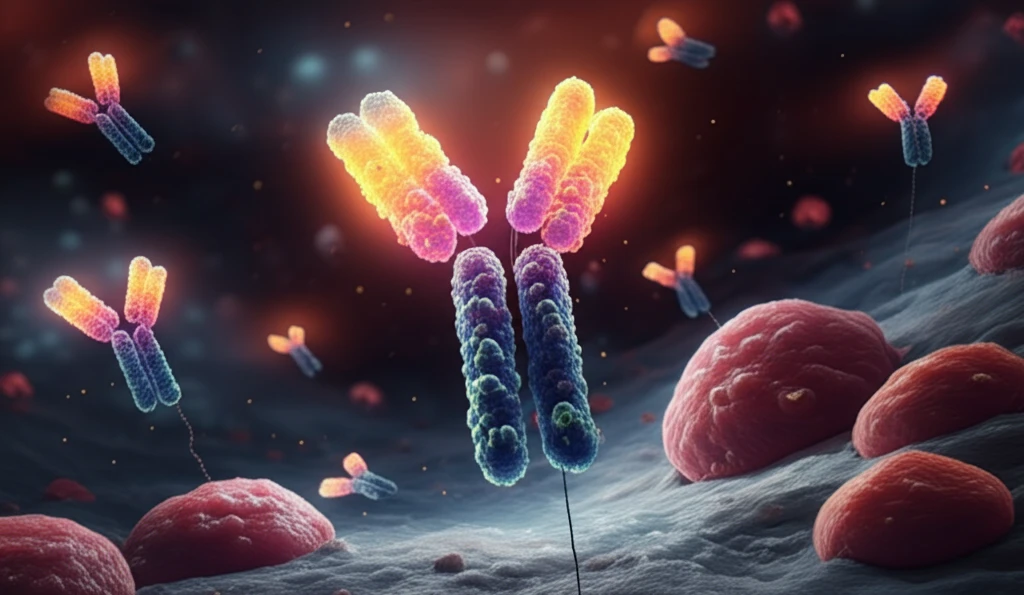
Unlocking Cancer's Secrets: Breakthroughs in Antibody Therapy
"From HER2-Negative Breast Tumors to Lupus-Based Cancer Fighters – How New Research is Changing the Game"
Cancer research is constantly evolving, and recent breakthroughs in antibody therapy are offering new hope for more effective and targeted treatments. These advancements span various approaches, from refining diagnostic methods for breast cancer to harnessing the body's own immune responses to fight tumors.
This article dives into several key studies that highlight the latest progress in this exciting field. We'll explore how researchers are overcoming the challenges of HER2-negative breast cancer, investigating the potential of lupus antibodies in cancer treatment, developing innovative therapies that target tumor growth factors, and creating new strategies to combat brain metastases.
By understanding these advancements, we can gain insight into the future of cancer treatment and the potential for more personalized and effective therapies.
HER2-Negative Breast Cancer: A New Diagnostic Approach

Historically, HER2-negative breast cancer has presented a significant challenge in treatment due to the absence of the HER2 protein, a common target for many cancer therapies. However, a collaborative effort between American and German researchers at the Technical University of Munich (TUM) has led to the development of a novel diagnostic method that promises to identify more patients who could benefit from HER2-targeted treatments.
- Overcoming False Negatives: Traditional HER2 tests can produce false negatives due to phosphorylation, masking the HER2 protein.
- Innovative Diagnostic Method: The new method involves extracting intact proteins from formalin-fixed paraffin-embedded (FFPE) tissue samples, a standard practice in hospitals.
- Combination of Techniques: Researchers used a combination of tissue analysis and protein arrays to detect active HER2-phosphoproteins.
- Comparison with Frozen Tissue: The results were compared with protein analyses of frozen tissue samples, which are known to provide more accurate results but are not always available.
- Clinical Implications: This innovation could allow more breast cancer patients to receive effective HER2-targeted therapies, improving treatment outcomes.
The Future of Antibody Therapies
These studies collectively underscore the potential of antibody therapies to transform cancer treatment. By refining diagnostic methods, targeting growth factors, and harnessing the immune system, researchers are paving the way for more effective and personalized cancer therapies. As research continues, the hope for better outcomes and improved quality of life for cancer patients grows stronger.
